QR Codes in France: 8 Common Use Cases And More
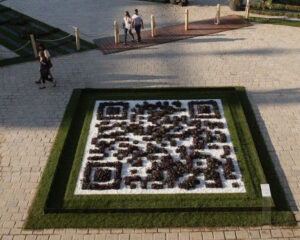
QR Codes are one of the most used print marketing technologies. If this weren’t the case, QR Codes wouldn’t be popular in industries such as:
Owing to its diverse use cases, QR Code technology is popular worldwide. Countries like the UK, United States, Canada, Australia, and China use QR Codes.
France, the land of fashion and fine dining, is also embracing the world of technology. And one of the biggest tech trends is the humble QR Code.
You might be wondering: are QR Codes really popular in France? The answer is a definite “oui”! The usage of QR Codes in France has recently skyrocketed.
While they might not be as famous as they are in some Asian countries, they’re definitely making their mark here in France.
Did you know that In France, every 2 out of 3 smartphone users have scanned a QR Code at least once in their lifetime?
France has found its place among the top world leaders in the adoption of QR Codes. This technology has been embraced in businesses cutting across industries for information sharing and promotion, ticketing, and payments.
Above all, the financial sector has invested extensively in QR Codes, with French banks keenly interested in developing mobile banking solutions around the technology.
Customers only need to scan a QR Code to log transactions or handle their finances. QR Codes have changed the face of retail, allowing more efficient online or in-store ordering and delivery.
As of April 2024, France ranks 4th in the top 5 countries with the highest QR Code scanning activity, accounting for 3.86% of the global scans.
With its rising popularity, we at Scanova decided to compile a list of common use cases of QR Codes in France:
A. Use cases of QR Codes in France
1. Healthcare
One of the most common uses of QR Codes in France is the “Pass Sanitaire,” or Health Pass. During the pandemic, the pass became a mandatory ticket to transit for many public places, like restaurants, movie theaters, and many others.
The QR Code embedded health pass contained important information about the holder’s vaccination or recent negative test against the deadly virus.
This simple yet powerful tool has greatly served in the secure reopening of a country.
The huge number of Pass Sanitaire documents highlighted how versatile the proof of vaccination QR Codes can be.
2. Payments
QR Code usage in France increased by 32% in 2020, right after covid-19. Followed by 2021 which saw an even greater spike in QR Code usage in France.
According to a study by L’Observatoire des Usages Internet—one of the major research companies in France—in 2021, more than 70 percent of the French population had used at least one QR Code.
This was such a steep jump from previous years that it seriously showed the speed at which this technology was being adopted.
UPI was launched in Paris in February this year. It’s great news for many Indians since purchasing tickets to visit the iconic tower can now be done without hassling over currency exchange rates or carrying heavy foreign currencies.
The Fivory app allows users to make cashless store payments by scanning a QR Code. Besides this, customers can earn loyalty points using the app. French bank BNP Paribas owns Fivory.
In Oct 2016, Fivory and Wa! announced a merger to create a “unified, universal mobile payment solution.” Wa! is an e-wallet owned by supermarket giant Carrefour. This new unnamed app will also support peer-to-peer money transactions.
French retail giant Auchan Retail customers use the Fivory wallet app to make payments. By mid-2017, it’s expected that the unified payment app will be integrated into the myAuchan app.
“The new app is expected to offer enhanced benefits to customers, comprising paperless billing at the checkout, money-off vouchers and loyalty programmes. All serving to streamline the customer’s movement through the checkout and underpinning the new-generation retailing experience that we’re building day-by-day.”
3. Retail
The retail sector in France has also embraced QR Codes with open arms. Most of its brands and retailers have taken up this innovation to improve engagement and create a seamless transaction between the seller and the buyer.
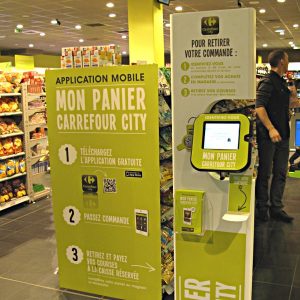
One very good case is one of France’s largest retail chains: Carrefour. By using QR Codes in its stores, this company enabled customers to shop without contacting anyone.
At every product display, shoppers could use their smartphones to scan a QR Code for more information, watch a product video, or even buy the item directly.
Hereby, the innovation not only solves the problem of convenience but also reduces necessary physical contact, thus following health and safety directives.
Louis Vuitton also engages its customers uniquely and highly interactively in the fashion world using QR Codes.
The luxury fashion brand used window displays fitted with QR Codes that, when one scans them, lead to exclusive content like behind-the-scene videos or virtual tours of new collections.
This innovative use of QR Codes allowed Louis Vuitton to connect with tech-savvy consumers in a new and engaging way.
In 2016, French department store chain Printemps partnered with Chinese e-wallet Alipay. Using Alipay, Chinese shoppers in Paris could make purchases at Printemps. This move made Printemps the first department store to introduce Alipay in France.
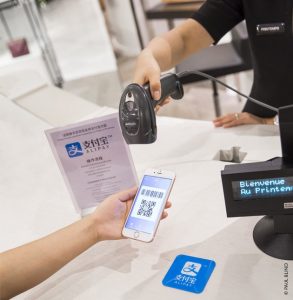
The shopper must scan a QR Code using their Alipay app to make a payment. This saved a lot of Chinese tourists the trouble of carrying a lot of cash.
“Chinese tourists are an important target clientele for Printemps, which is why we are developing various unique offers and services to ensure the best response.“
– Annalisa Loustau, Chief Marketing Officer, Printemps Group
4. Marketing
During the COVID-19 pandemic, one of France’s biggest supermarket chains, Monoprix, implemented online shopping via QR Codes.
They used QR Codes on shelves that customers could scan, thereby adding a product to their online shopping basket.
This, in fact, was very instrumental in ensuring contactless shopping with an excellent user experience.
L’Oréal Paris also used QR Codes in their product packaging, allowing customers access to more information about the product, including tutorials and usage tips.
Their initiative was to enhance customer experience by providing more value with digital content.
McDonald’s France used QR Codes in its in-store point-of-sale displays and product packaging. In return, customers can scan the QR Codes and receive special offers and coupons by downloading the mobile app.
This helped to increase the number of app downloads and drive more traffic toward digital platforms at McDonald’s.
The luxury department store Le Bon Marché integrated QR Codes into an in-store art installation. Scanning the QR Codes, customers got further information about artists and works, turning a trip to the store into an interactive cultural event.
In 2012, premium sports footwear company Reebok ran a QR Code marketing campaign. The campaign allowed people to win VIP passes to the Cannes Festival. People had to scan the QR Code and fill out the registration form to register.
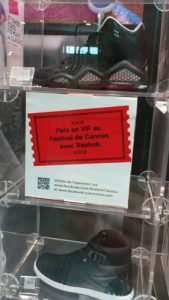
In July 2013, the castle of L’Hermine, Vannes, featured a large QR Code. Scanning the QR Code led scanners to a mobile game. Besides the game, the QR Code also led scanners to the city’s page, which detailed its history and culture. Within two months of installation, the QR Code received 6,000 scans.
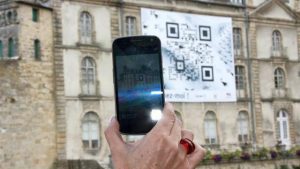
Did you know that installing this QR Code led to a 30% increase in the city website’s traffic?
Branding cattle with QR Codes may sound funny, but it is quite practical for dairy farmers in France.
In 2012, the French Government passed a law limiting the number of billboards in certain areas. This, in turn, restricted marketing opportunities for dairy farmers. As an alternative marketing method, dairy farmers painted QR Codes on cattle.
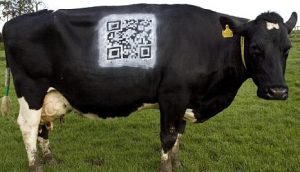
Painting cattle with QR Codes helps farmers maintain information and inventory processes. Besides this, buyers could access extra information on the cow by scanning the QR Code.
As a marketing gimmick, scanning some QR Codes can also lead to a mobile game. Bookbeo, a mobile marketing agency in France, designed the mobile game.
In 2011, there was a similar use case in the UK. Cattle on sale at an auction were painted with QR Codes.
5. Restaurants and hospitality
QR Codes have also changed restaurants and the hospitality scene in France. Given the necessity for touchless solutions, many restaurants embraced QR Codes for ordering, ordering items on menus, and payments.
Big Mamma, the restaurant chain, began almost instantaneously adapting to the new normal, with the abolition of traditional menus replaced by a QR Code.
Customers can scan a code at their table for the menu, order food, and pay—all from a customer’s phone.
This not only minimized physical contact but also accelerated ordering procedures, enabling one to have a more efficient and more pleasant dining experience.
Similarly, one of the hospitality leaders in France, AccorHotels, embedded QR Codes into all their properties.
Guests could check in, order room service menus, and discover hotel facilities without touching any shared surfaces.
This effort enhanced the guest experience and discovered the potential of QR Codes for operational efficiency in hospitality.
The Best Western Hotel Le Montparnasse in Paris uses QR Codes to showcase room amenities. Each room has a brochure with a printed QR Code. Scanning the QR Code directs the guest to a PDF listing the hotel’s facilities.
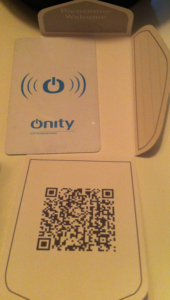
In March 2017, the French capital, Paris, announced a 40% decrease in advertising space. This move will likely see more print marketers opting for QR Codes.
6. Art and culture
In addition, QR Codes fit into the rich cultural heritage of France. This innovation is applied to increase interactivity and details of information for visitors to various museums, heritage sites, and cultural institutions.
One of the world’s best museums, The Louvre, uses QR Codes as part of its visitor experience.
Detailed information, audio guides, and even augmented reality functionality were all part of a solution that enabled users to bring artworks right on their devices at the scans of codes placed next to exhibits.
This enriched the visitor experience and added multilingual content for improved accessibility to international tourists.
Another example is the city of Nantes, which applied QR Codes in its “Voyage à Nantes” cultural trail.
Following the path and using these codes, one could uncover the history and legends of the significant monuments and works of art found throughout the city.
This new concept in tourism allows everyone to visit Nantes at their own pace and is both information-rich and entertaining.
In 2011, the garden in Stanislas Palace in Nancy, France, displayed the world’s first botanical QR Code. The QR Code was added as a temporary attraction at the palace gardens during the renovation.
Built on an area of 40 square feet, the QR Code was made of several flowering pots. Scanning the QR Code directed people to a website listing the events scheduled at the palace.
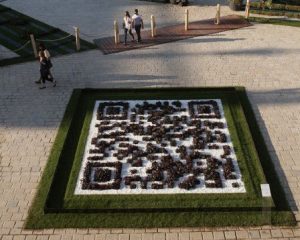
7. Transportation
QR Codes have also left their mark on France’s transport sector. In a bid to make traveling easier and more convenient, many public transport companies have incorporated QR Codes into their services.
SNCF, the French national railway company, has introduced QR Code tickets for its high-speed TGV trains.
The ticket is purchased online, and the QR Code is received on a mobile phone and then scanned at the gate to board the train.
This not only reduced the use of paper tickets but also hastened passengers’ boarding time, thereby facilitating travel.
In Lyon, the public transport authority posted QR Codes at the bus stops and tram stations that, when scanned, gave the schedule, delays, and other interests around the area.
This QR Code application has greatly improved the commuting experience in general with the ease of access to the transport network for its residents and tourists.
8. Schools
Elorn High School in Landerneau, France, uses QR Codes to bring poems and history to life.
The school takes students on a digital poetic ride as part of a history circuit. The school issued students a booklet with 10 QR Codes. Each QR Code gave information on one of the 10 historic sites across the city.

The aim is to get students to discover a more contemporary literature through reading and encounters.
–Christian Lardato, Professor of Literature, Elorn High School


B. Challenges and opportunities for QR Codes in France
Despite the growing popularity, there are still some hurdles that QR Codes in France are facing.
Some consumers, mostly belonging to older generations, may not be familiar with this technology. Besides that, concerns regarding data privacy may slow down the wide diffusion.
However, the benefits are huge: QR Codes can improve customer experiences, increase marketing efficiency, and make operations easier.
If security and user experience concerns are resolved, then business will have effectively unlocked a great potential for QR Codes within the French market.
C. The future of QR Codes in France
We will see much more innovative applications as technology advances further. For example, integrating QR Codes into augmented reality experiences could provide interactivity and immersion in the content.
Given France’s reputation for style and innovation, it would be the ideal testing ground for new QR Code technologies.
Of course, proper strategy and investment are necessary before this technology can be brought to the fore globally.
If you are a print marketer in France, take advantage of this opportunity and add QR Codes to your campaigns.
D. Choose Scanova for your QR Code campaigns
Picking the right tool to make your QR Codes is important. You need one that can be customized, gives you data, and keeps people’s information safe.
Scanova is a great choice. Here’s why:
- Many options: You can make many kinds of QR Codes, from simple links to fancy feedback forms.
- Good-looking QRs: You can design your QR Codes to match your brand.
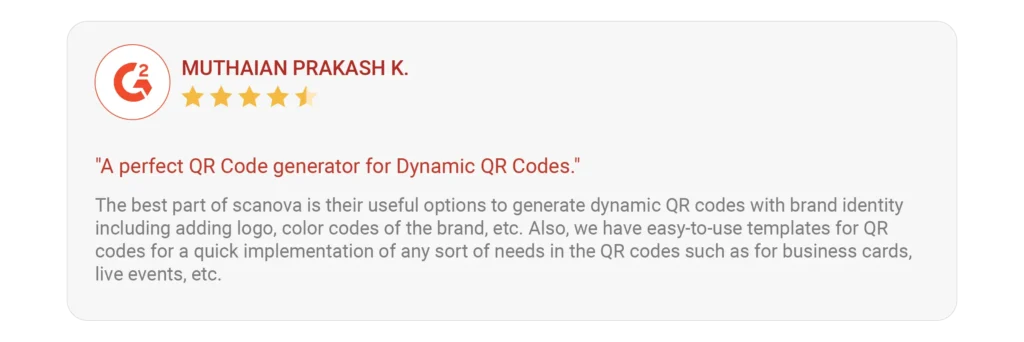
- See how it’s doing: Scanova has awesome analytics that tells you how many people scanned your code, where they scanned it, etc.

- Keep info safe: Scanova’s robust data privacy and security measures protect your customers’ information.

- Easy to use: Anyone can use Scanova. No prior technical knowledge is required!

- Affordable: It’s not at all expensive, and you can even try it for free.

Conclusion
As QR Codes continue to evolve, they will undoubtedly play an even more significant role in shaping the future of France’s digital landscape.
So, next time you see a QR Code, don’t hesitate to give it a scan—you never know what you might discover!

